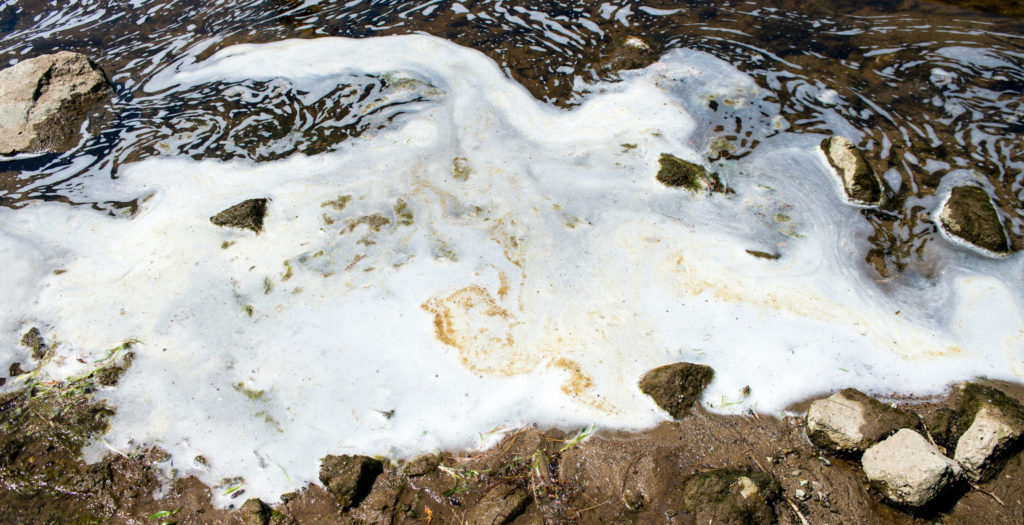by Anna Bunting
The 48217 area in southwest Detroit is known as Michigan’s most polluted zip code. In fact, the communities of Melvindale, River Rouge, Delray, and Ecourse show up on Michigan’s environmental justice screening tool maps (MiEJScreen) as a deep red: the highest in the state. The higher the score, the more likely a community is to be afflicted with high measures of air pollution, polluting industry, as well as poor health and socioeconomic conditions that increase susceptibility to pollution. The residents of southwest Detroit, of course, don’t need a government tool to tell you this.
Theresa Landrum, a long-time environmental justice advocate, took University Michigan graduate students on a “toxic tour” of the area she has lived all her life. We drove from one major polluting industry to the next – many located along the same street. Steel plants, a giant water treatment plant, and refineries stood right across the road from rows of homes. One stop on the tour was the Gordie Howe International Bridge construction site where PFAS contamination was recently discovered. Amidst the stories and landscapes of environmental disaster, art served as a light in the dark. Theresa worked with U of M art students and local business owners to paint murals with messages of community power, resistance, and what a bright future might look like.
After the tour, Theresa, who participates in the Citizen’s Advisory Board of the Michigan PFAS Action Response Team continued with a teach-in on the dangers of PFAS – per-and polyfluoroalkyl substances, also known as “forever chemicals” as they do not break down in the environment. PFAS refers to a family of more than 9,000 known chemicals which are used broadly in industrial processes and everyday products. Exposure to PFAS is proven to increase health risks of testicular and kidney cancer, reproductive complications, birth defects, and more. Theresa demonstrated how these are “everywhere chemicals” by challenging her neighbors in attendance to pick the one item that wasn’t known to have PFAS in it of the 30 she brought from her home. Among the dental floss, clothing items, and pop cans – the correct answer was ziplock bags
The threat of PFAS is indeed everywhere, but the citizens of southwest have had cause for major concerns about the emerging contaminant in recent years. In 2018, a mysterious foam bubbled up onto Schaefer highway – the same road that the Kemeny Recreation Center, where local youth play outdoors. This foam, tested by state government, was found to have an extremely high concentration of PFOS, around 729,000 parts per trillion (ppt). Michigan’s maximum contamination level for PFOS is 16 ppt in comparison.
The centerpiece of this teach-in was a screening of the “No Defense” documentary which focuses on the PFAS crisis in Oscoda, Michigan. Residents have been plagued by the environmental and health repercussions of wide-spread and decades-long use of PFAS at Wurtsmith Airforce Base. Tony Spaniola, co-chair of Great Lakes PFAS Action Network and a central figure of the documentary, came with a message; we need to come together for the health of our communities. Despite clear differences in the racial makeup of these two communities, both Oscoda and southwest Detroit are fighting for their lives against pollution and the powerful institutions that create it. The residents of southwest responded with shouts of affirmation and testimonials about living with the hazards of industry. There is a long road to make the southwest Detroit community healthier for the vibrant and welcoming community there. Both southwest and Oscoda residents are sustaining their efforts to demand better air quality and drinking water standards. You can help by following these issues in our weekly and taking actions when offered!








